Architecture Moments™: The Bayon Temple of Angkor Thom

The Cambodian city of Siem Reap is home to Angkor Wat, our planet's largest religious monument. However, are you aware that another fortified complex of temple ruins also exists in the neighborhood? Meet Angkor Thom with the majestic Bayon Temple nestled at its core!
Created by STORIES OF ERNE™ on March 5, 2023
Encountering the Stone Towers of Smiling Faces
After a fresh exit from the world-renowned temple of Angkor Wat (this was my first priority!), the tour guide and I together with our trusty Tuk-Tuk, immediately proceeded to our next destination. Tall trees, thick vegetation, dilapidated stone structures, and dusty roads greeted us on the way there. Being in an unknown location, it was like plunging deeper into a wormhole that transported us back in time!
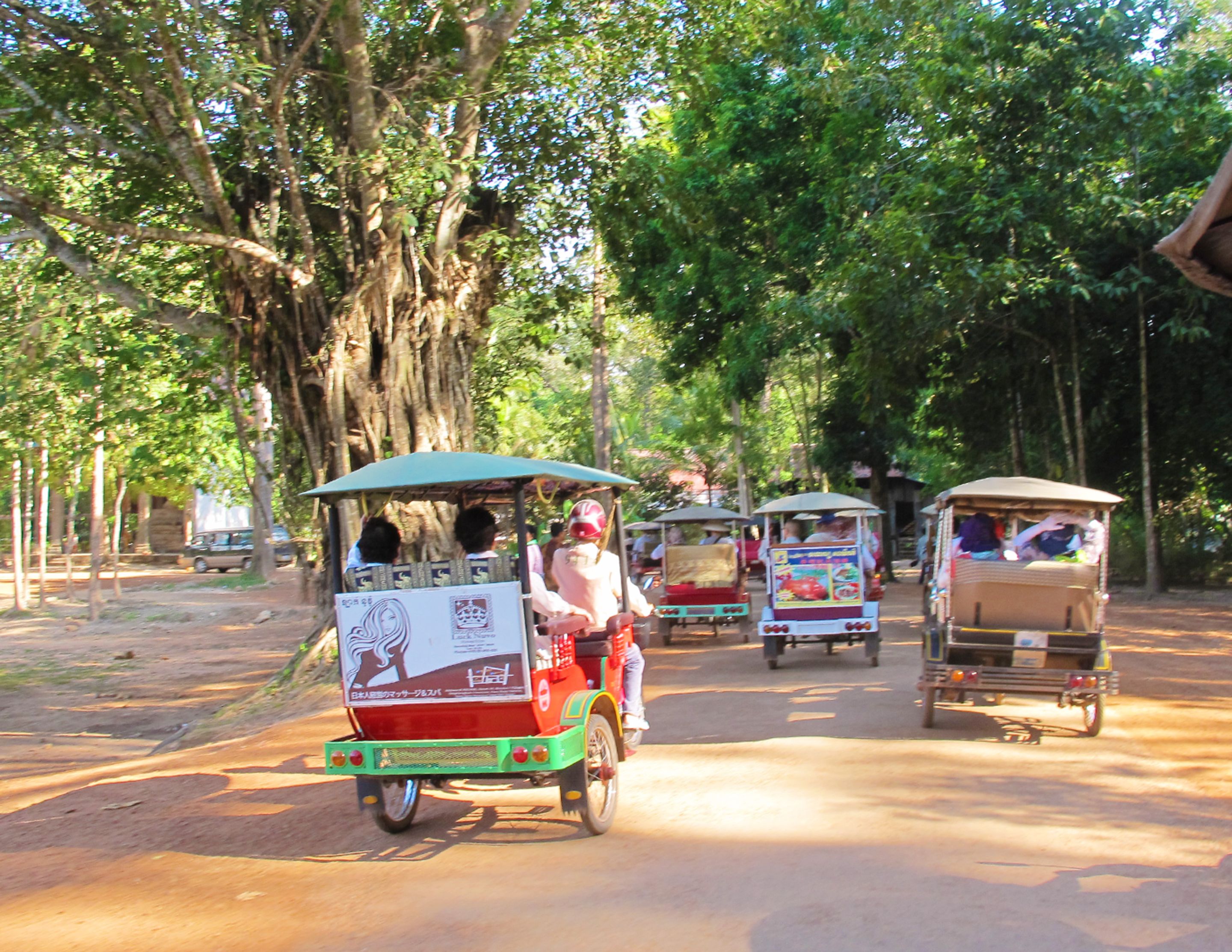
As we journeyed through the dense jungle, noisy motorcycle engines of other Tuk-Tuks nearby roared wildly. I considered my ride to be an adventure in itself because it had never occurred to me that I'd be wandering solo in a foreign country - exploring its local architectural relics.

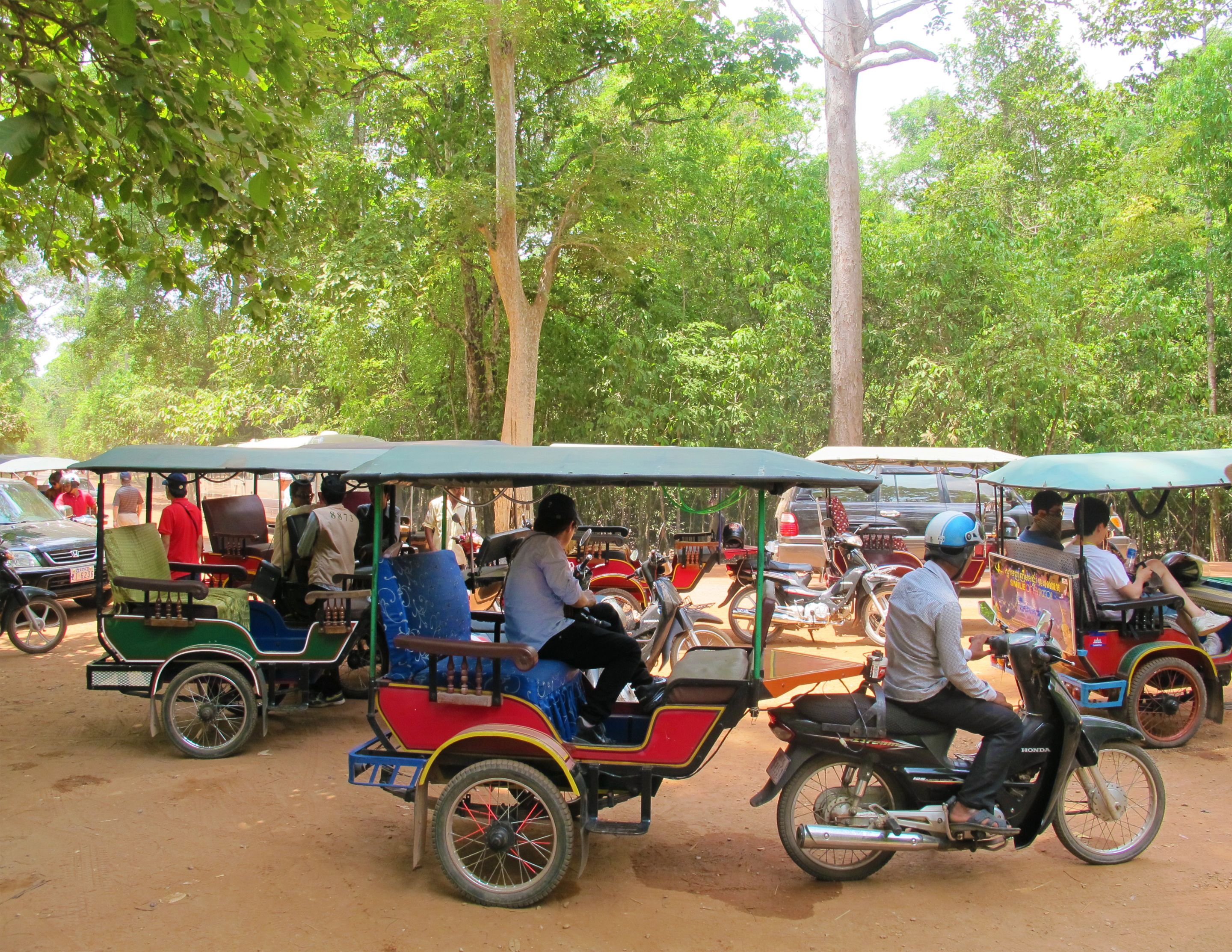
Nevertheless, the ecstatic chatters of other foreign commuters traversing in identical motorized vehicles, plus those who seemed to be also exploring similar temple ruins, helped to calm me down, not worrying about the eminent risks involved in traveling alone.

Exploring a Sacred Site of Khmer Architecture
"We have arrived Sir," my travel guide suddenly announced as he pointed towards the historic landmark. And there it was resting in its glorious splendor against the natural backdrop of slightly cloudy blue skies and green foliage.
"Isn't it gorgeous?" I answered him. This was the breathtaking exterior façade of the Bayon Temple immortalized by my camera as my panoramic visual:
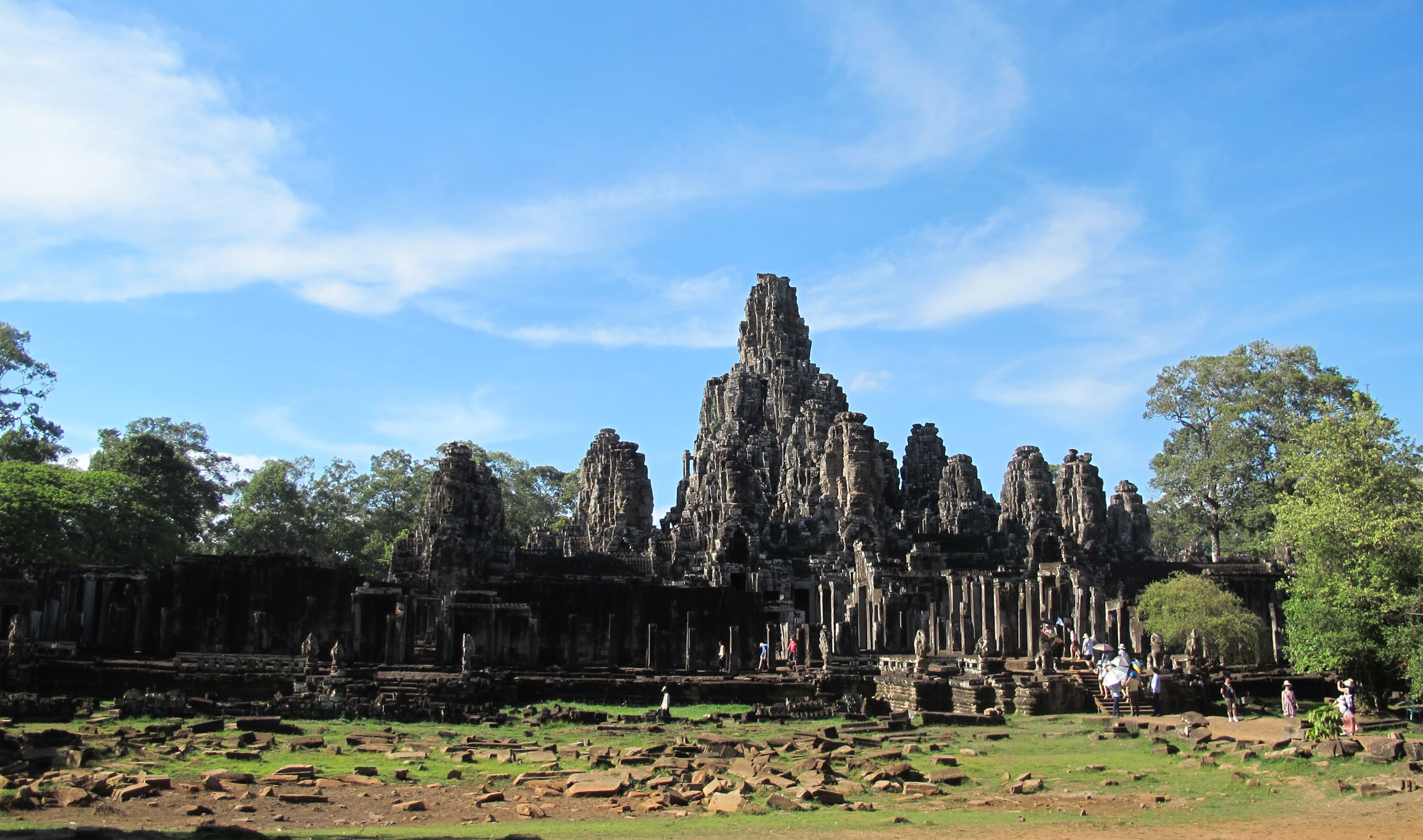
Though I was wearing sunglasses, the intense glare from the scorching rays of the midday sun nearly pierced my eyes. As I walked towards my second Khmer temple to be probed, my feet were also restless hurrying up to get to the site's entrance. Upon entering the vicinity, my eyes stumbled upon some information boards that looked interesting. They were actually highlighting facts about the temple's restoration project plus some historical data.
Contrary to Angkor Wat's incredibly enormous footprint, the Bayon Temple's spatial layout was surprisingly smaller in scope. From a distance, I couldn't decipher its actual architecture since there were several missing pieces on the design puzzle.


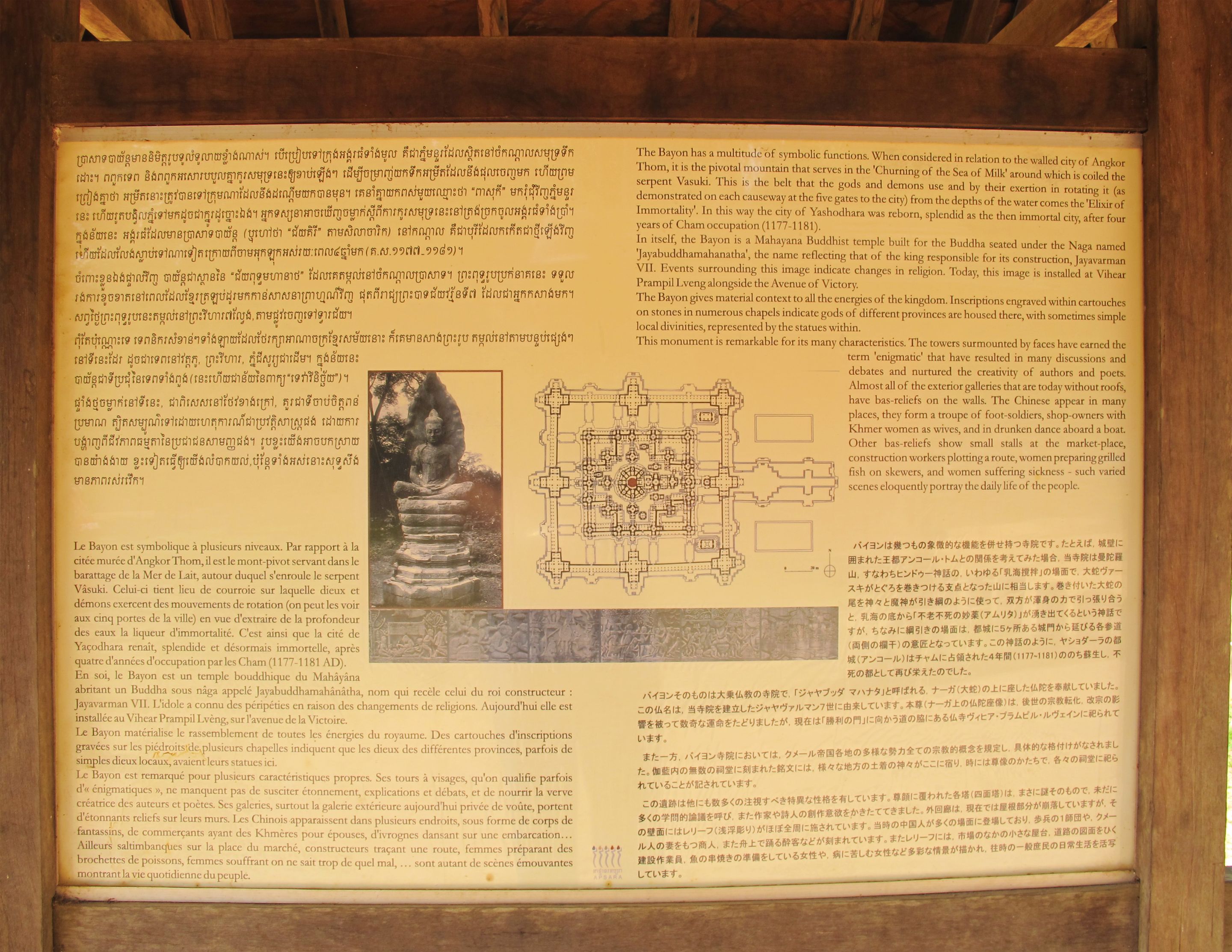
Only remnants of sandstone and laterite were obvious without traces of other probable building materials like wood and metal which must have already disappeared - thanks to the ravages of time.
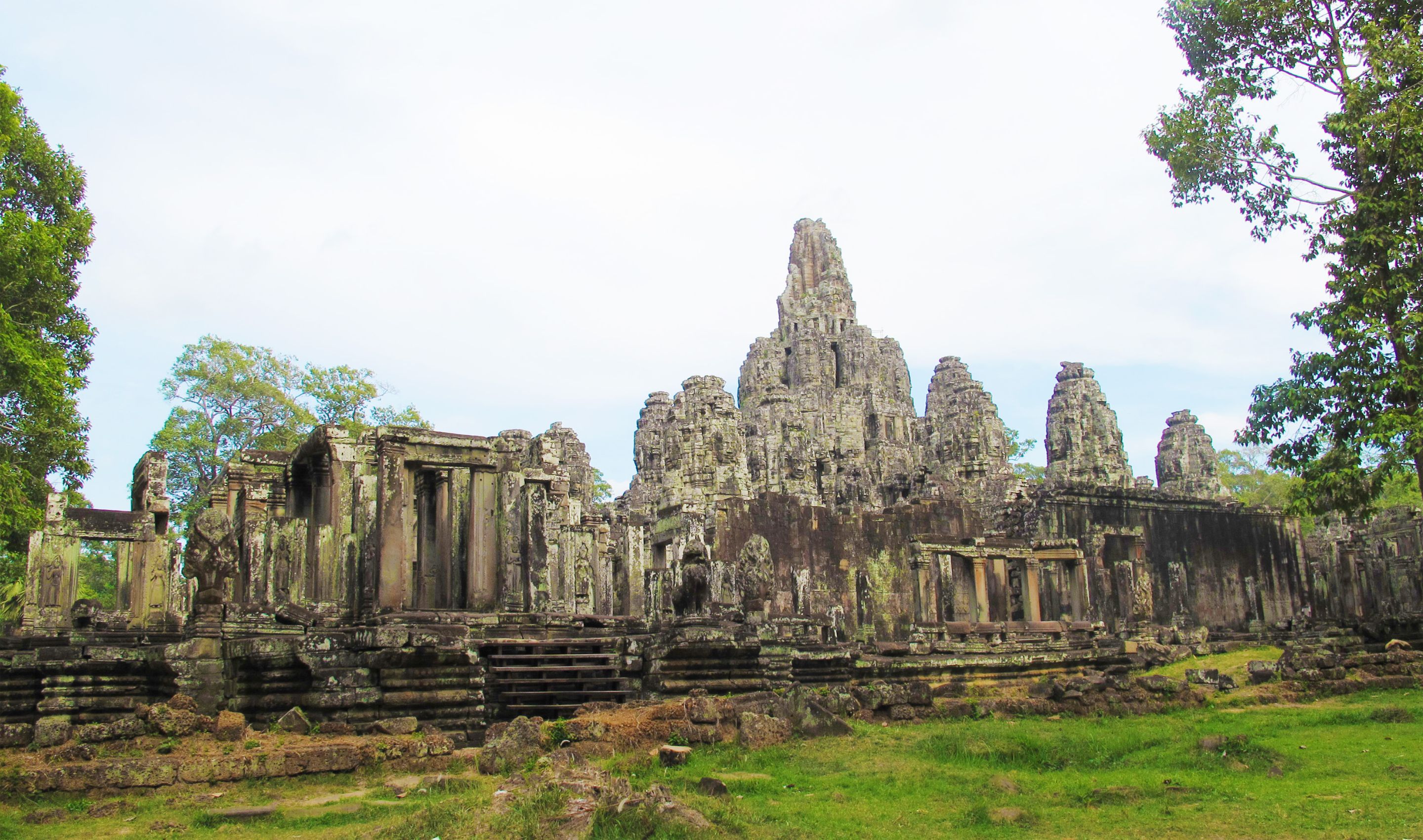
Yet, from an Architect's perspective , I'd visualize the entire landmark to be mimicking a little mountain with cascading towers overlooking this ancient civilization. I might be mistaken in my approach, but that was how I imagined it to be. Moreover, if there was one striking feature of the Bayon Temple that I couldn't ignore, it would be the distinctive smiling faces embossed on all its prominent pillars. And their bulging eyes appeared to be fixated on me! Isn't that hair-raising?
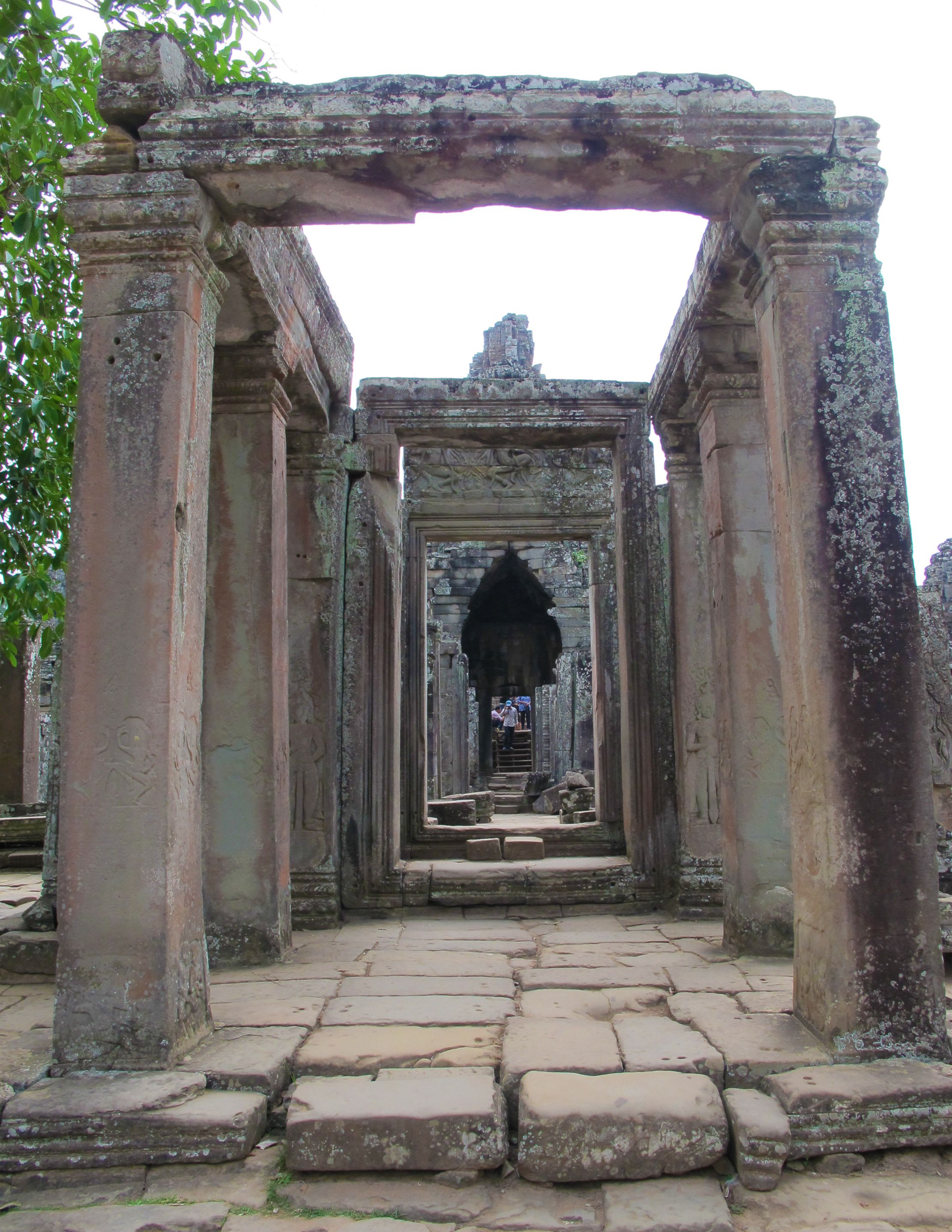
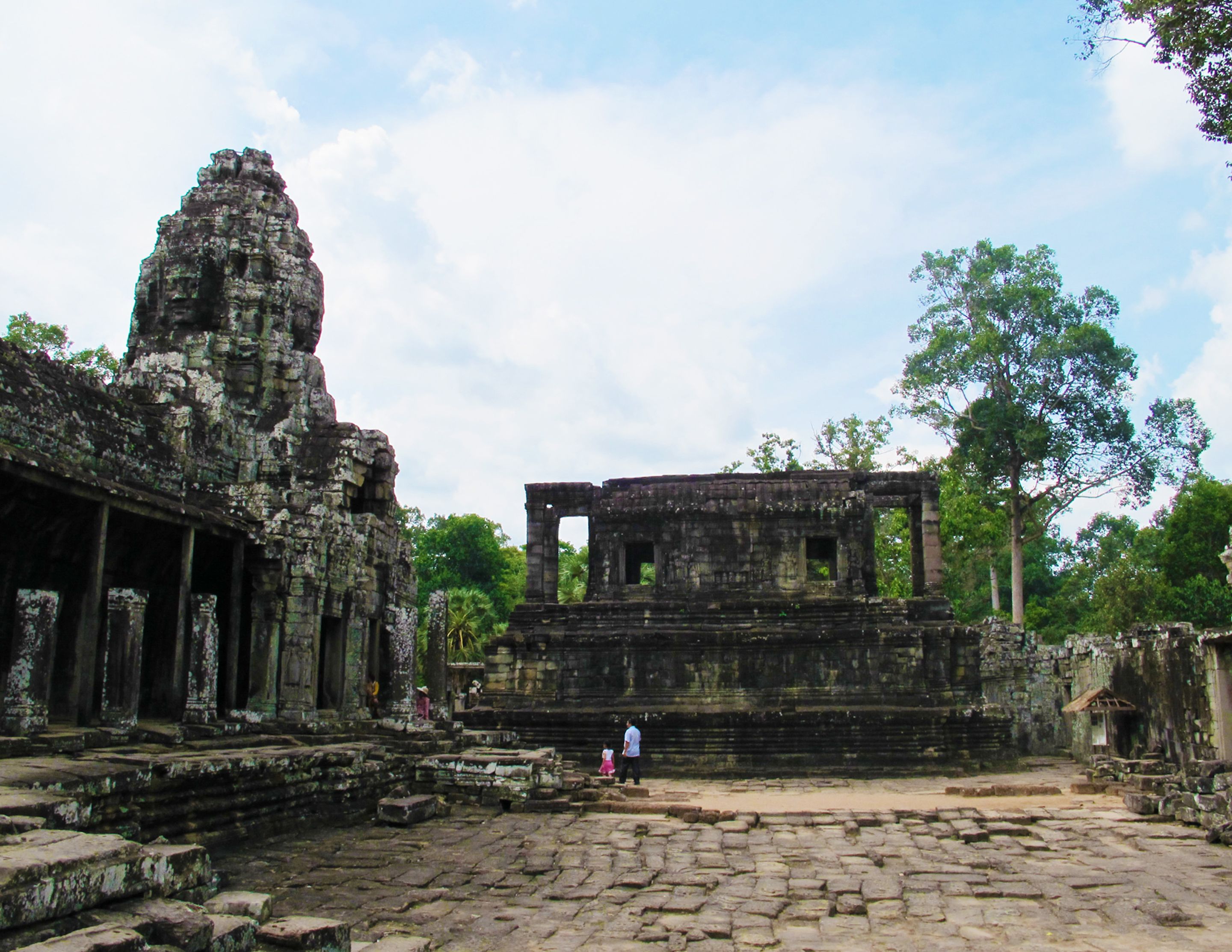
As I moved inside the complex, I couldn't help but notice the decaying elements of the temple ruins as they succumbed to the forces of nature. As I've mentioned, there were barely other building materials left on the premises, only the surviving legacy of stones serving as long-lasting testaments against centuries of cruel weather conditions. If so, does this prove the timeless quality of sandstone and laterite? You bet!

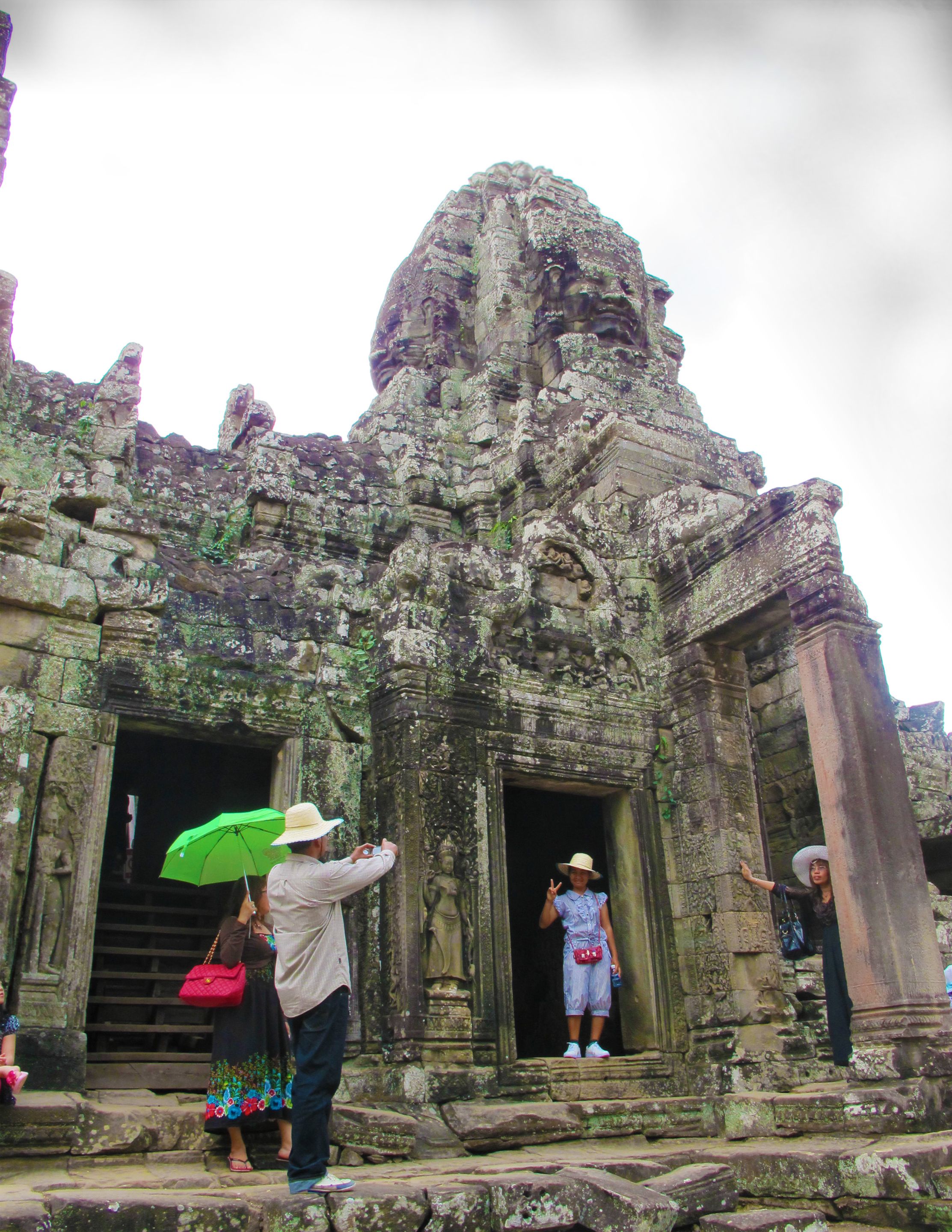
As I walked deeper into the inner realms, I became more conscious of my movements since, apart from the other visitors nearby, there were other pairs of eyes glancing down at me. And despite their stony appearances, these towering columns of smiling faces resembled human titans that were about to pick me up with their mammoth hands. Would you experience a similar sensation if you were in their midst? Have a look at the following images. Would you run for your life if these majestic giants suddenly awakened and said "Hello" to you? I would, that's for sure!
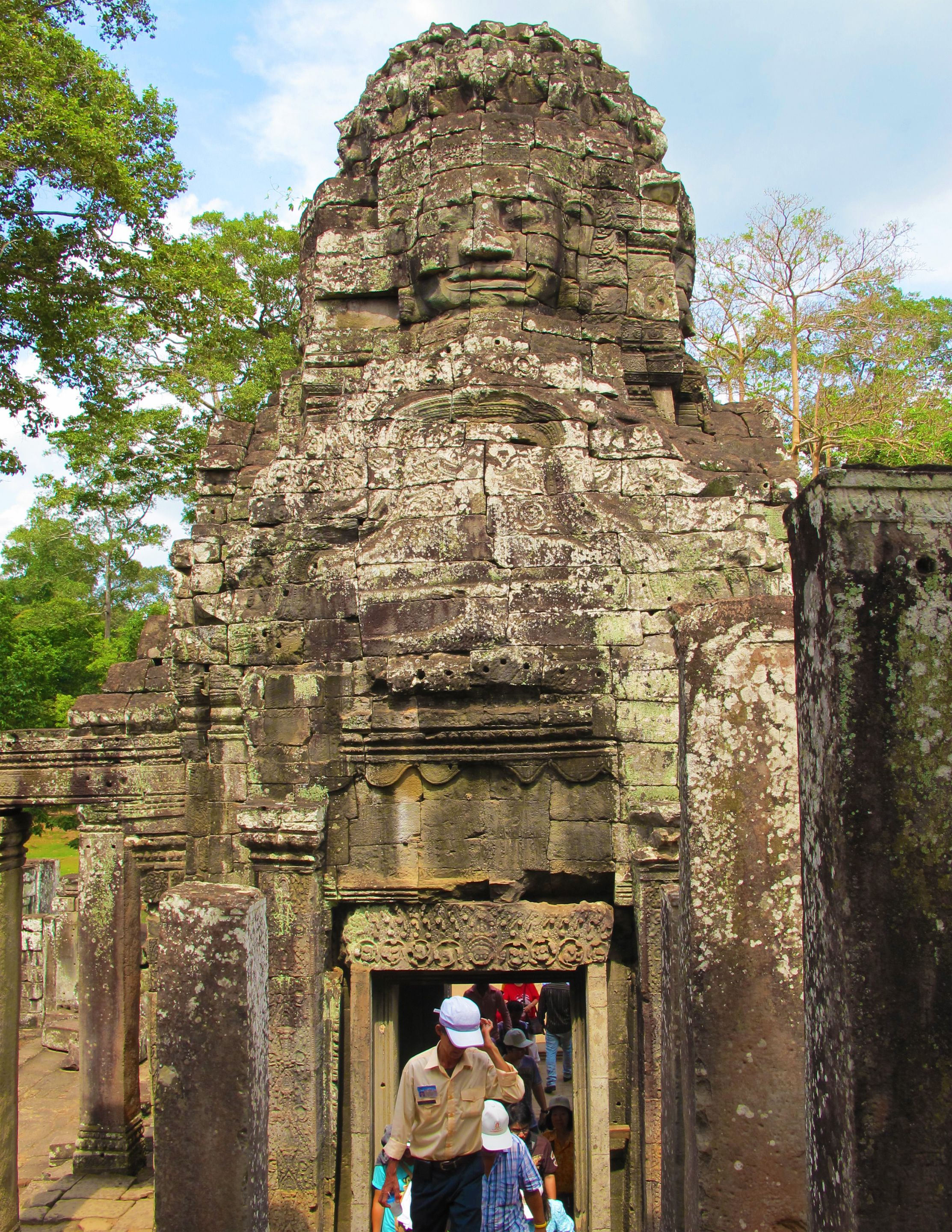
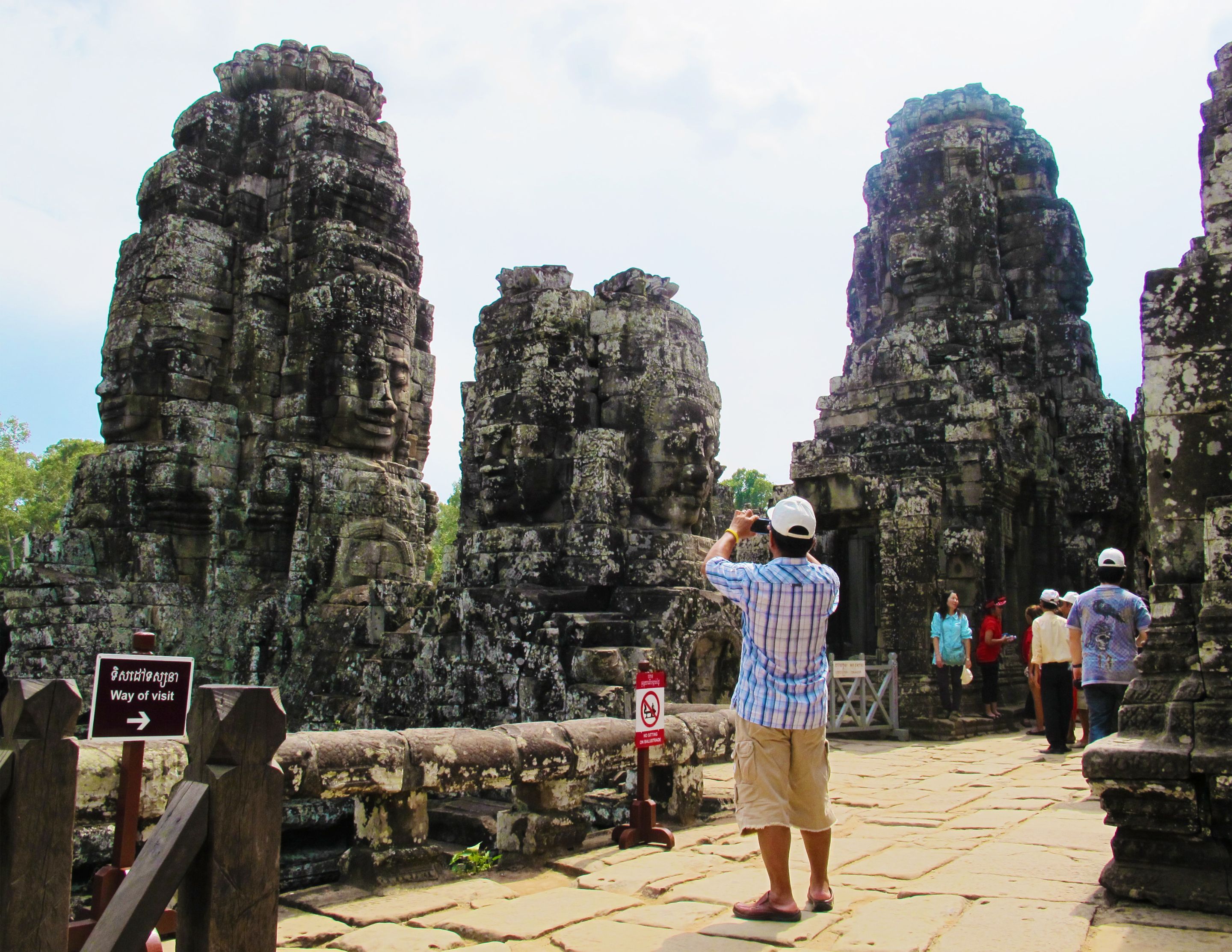
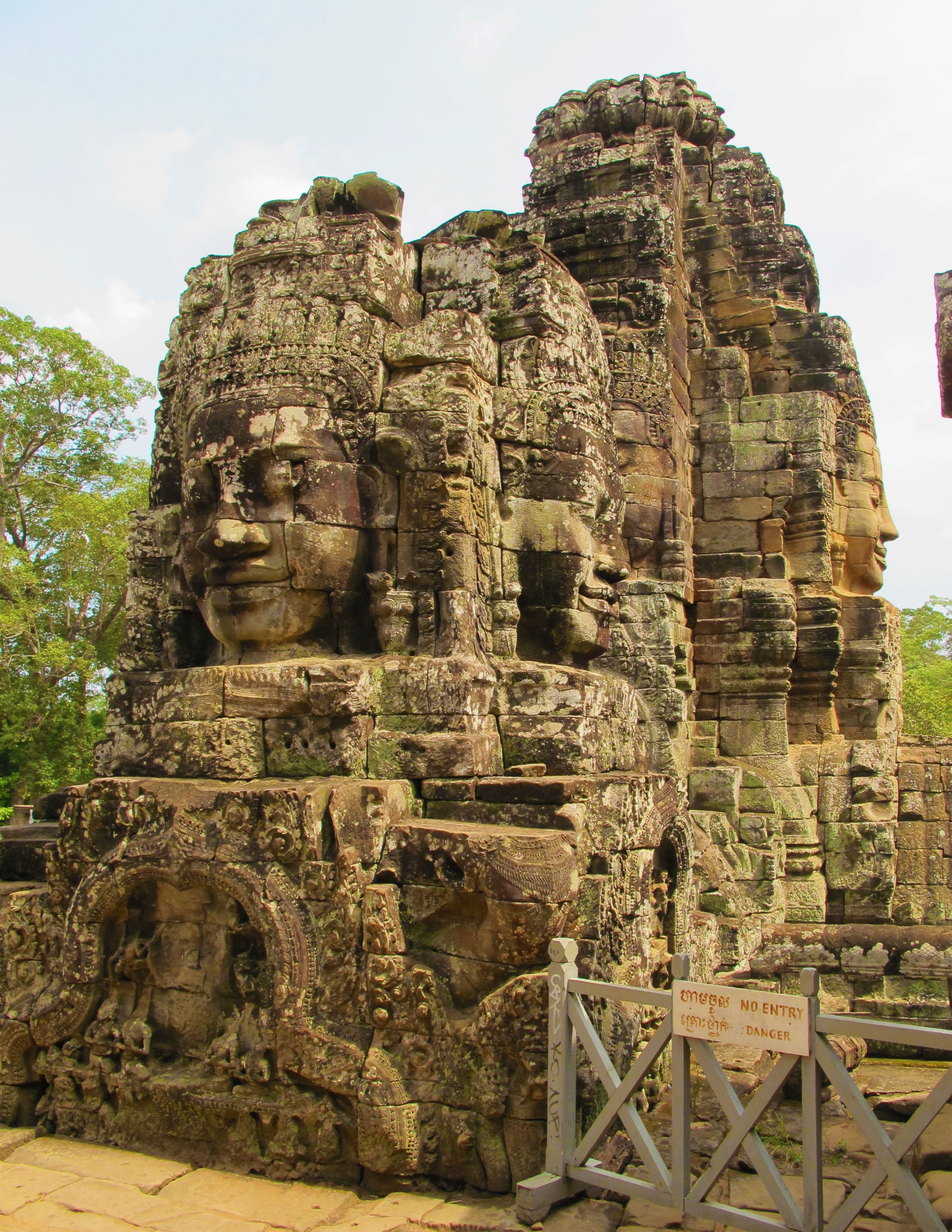
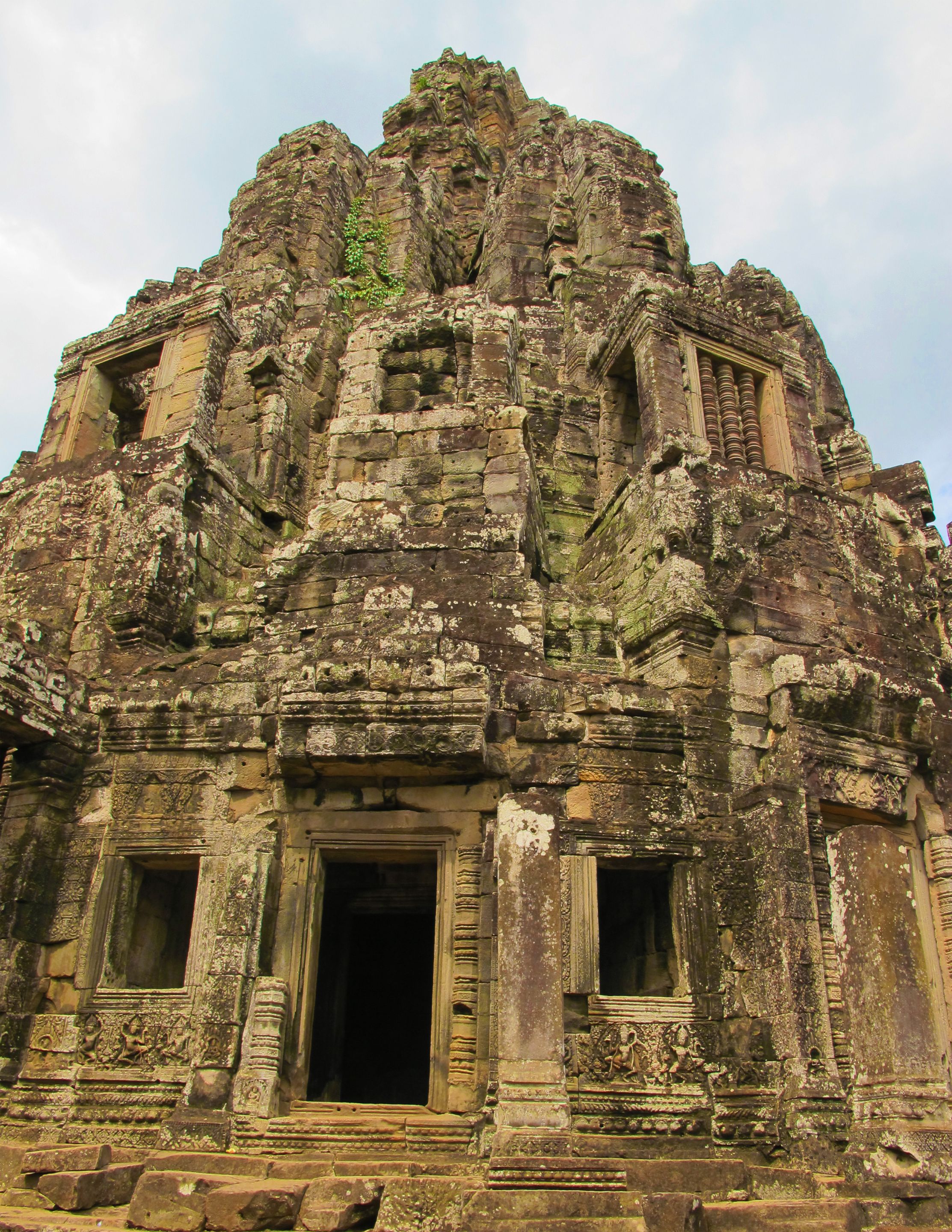
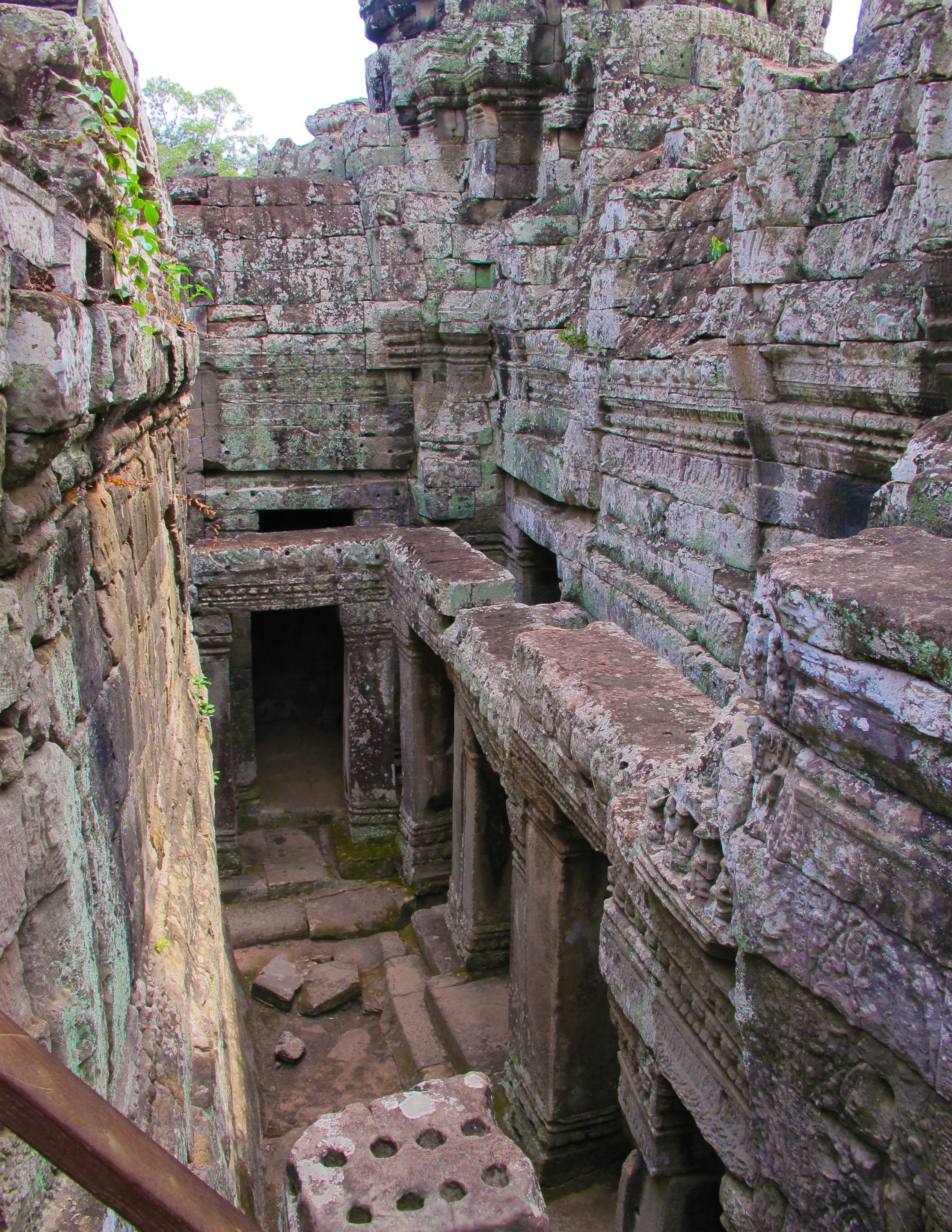

In fact, I simply don't know the real purpose of the human faces on these temple towers. As there's a lot of controversy and debate trying to figure out their ultimate significance, perhaps a slight personal assumption wouldn't hurt. I have the impression that these smiling faces were constructed to depict God-like encounters to believers. And because they were crafted within holy sites like the Bayon Temple, these massively elaborate sculptures had the tendency to portray authority, royalty, sovereignty, and divinity. What's your opinion?

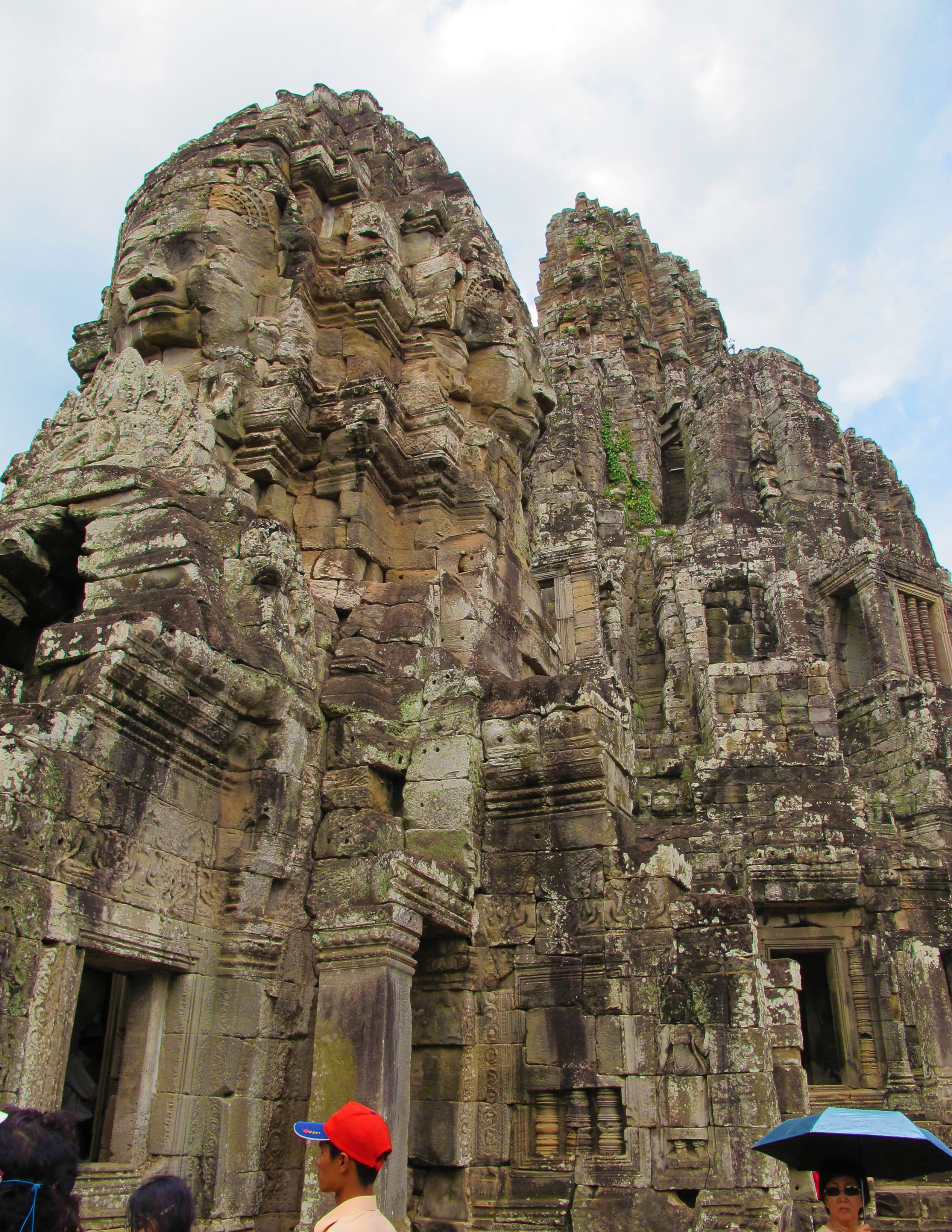
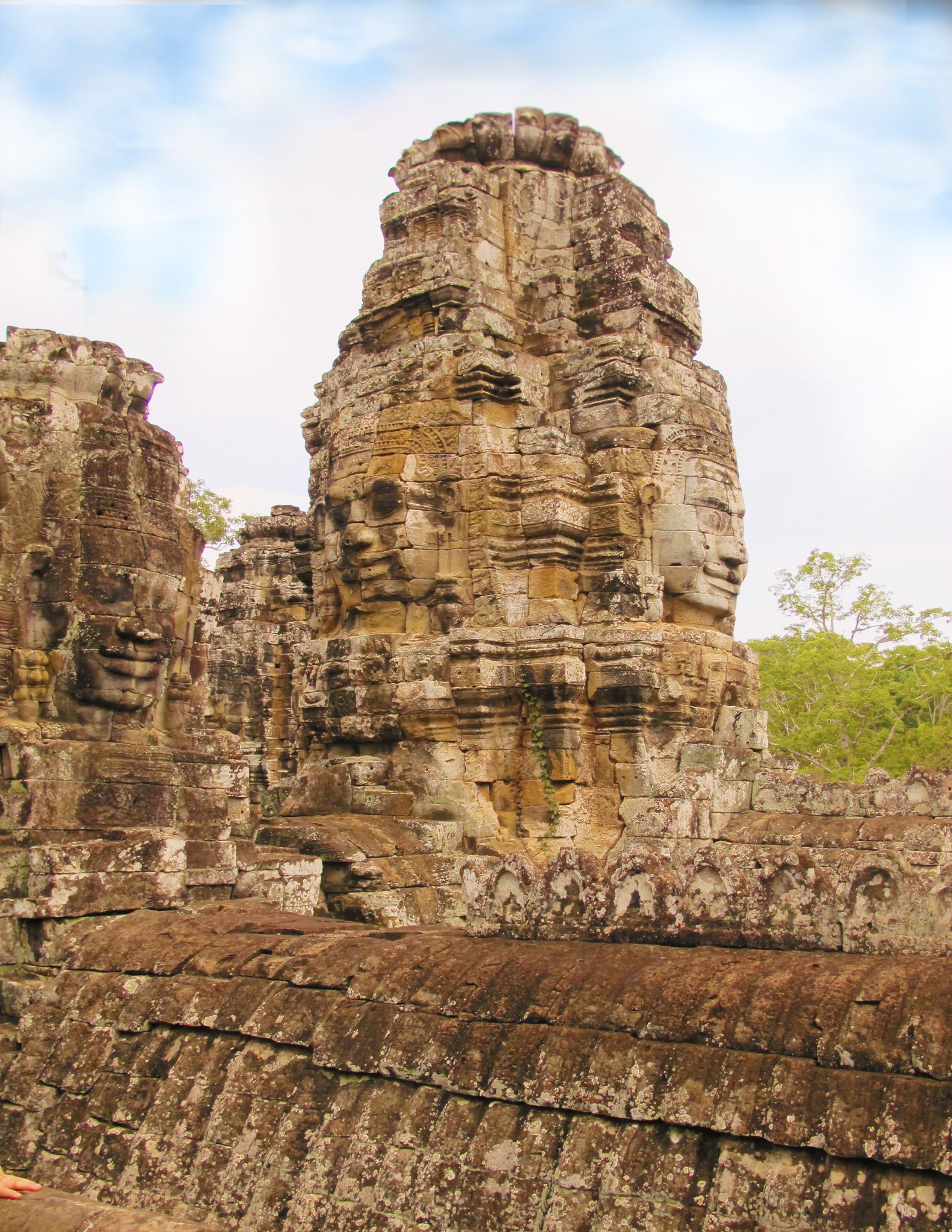
My neck stiffened after departing the temple area where most of the face-towers were located. Well, that was a natural reaction since I was looking up most of the time. You'd probably feel the same way too. Nevertheless, it was one of the most magical experiences I had within that temple ruin. Afterwards, I didn't waste the opportunity to relax for a bit outside the temple's perimeters and breathe some fresh air.
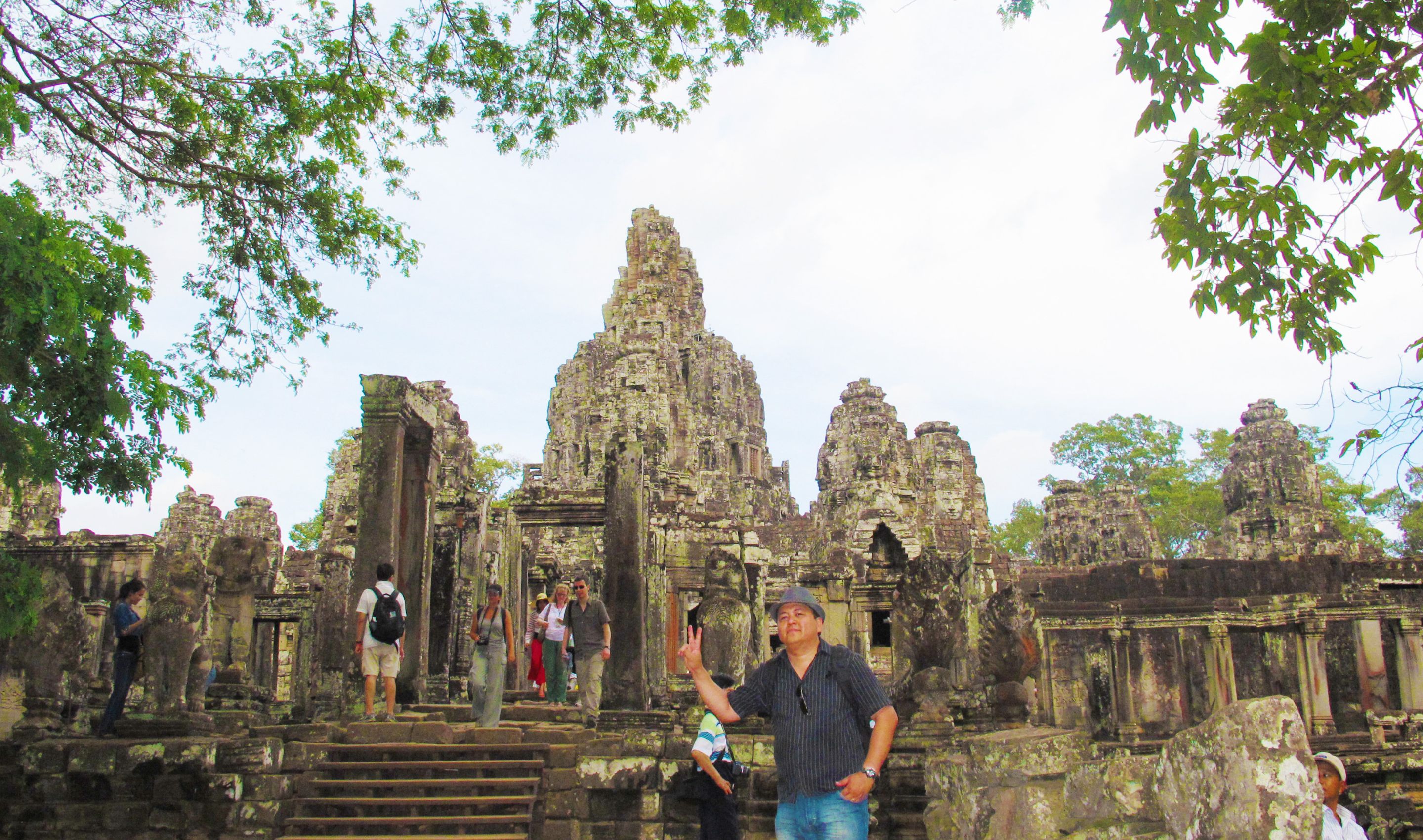
Hold on, there's more!
Apart from the spectacular pillars, there was another crucial aspect of the Bayon Temple's architecture that deserved our attention. These were the stone artworks, sculptural galleries, and bas-reliefs that adorned them! As meticulously beautiful, ornate, and decorative as they were, I was immediately drawn to them for a closer peek. You won't believe the exquisite intricacy of these masterpieces! There were various scenes depicting interesting stories about local Khmer culture and traditions, historical events of warfare, royal lifestyles, including typical activities during the Angkor era as a whole.
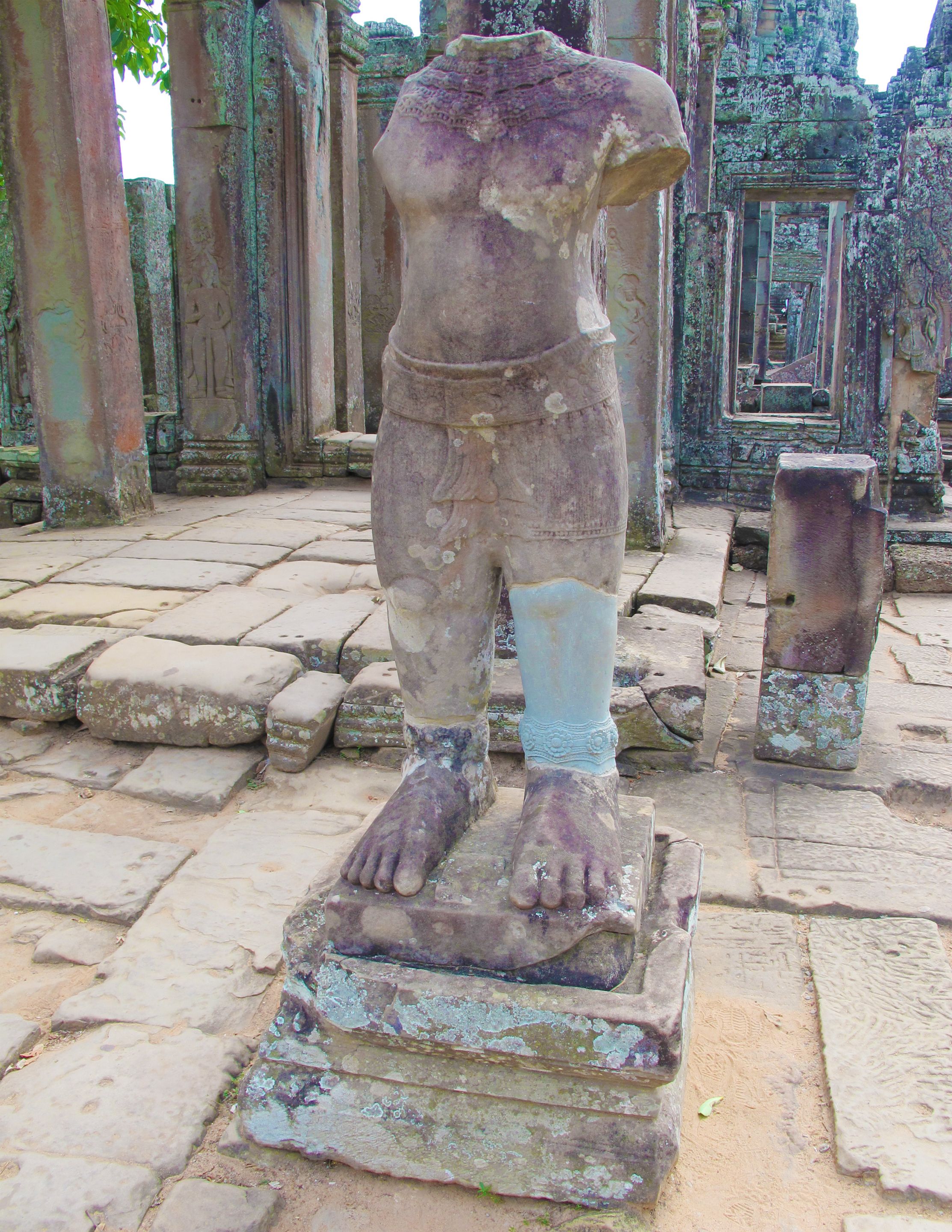
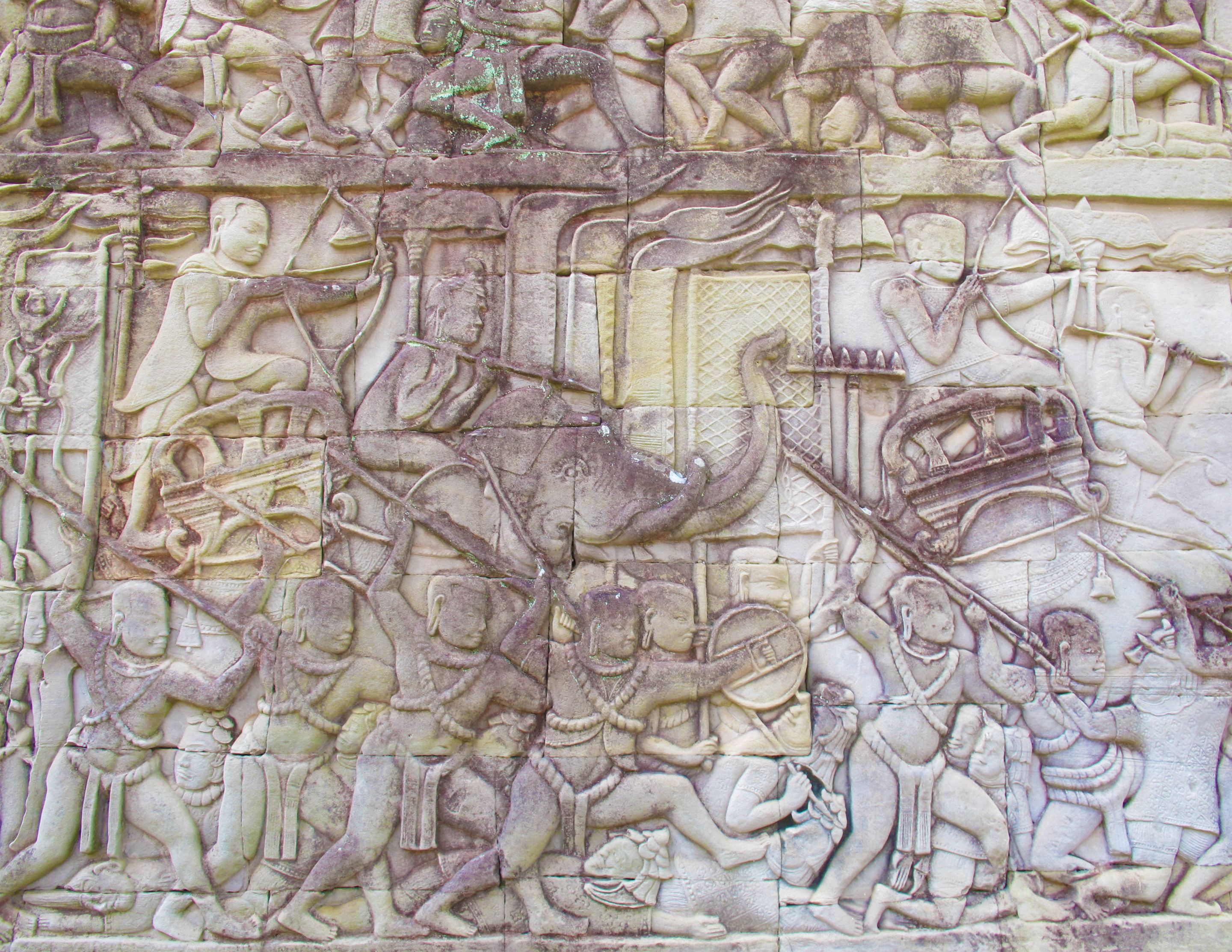
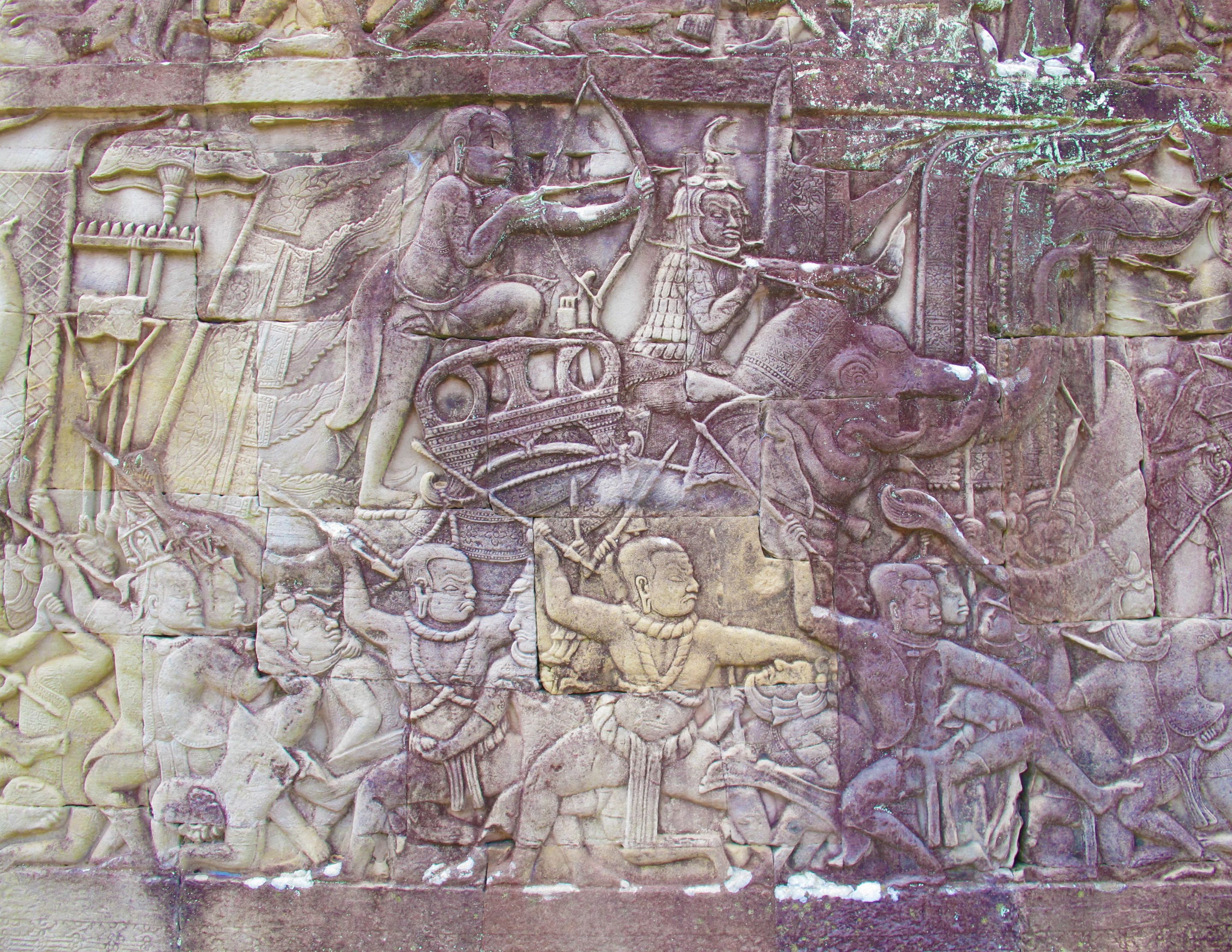
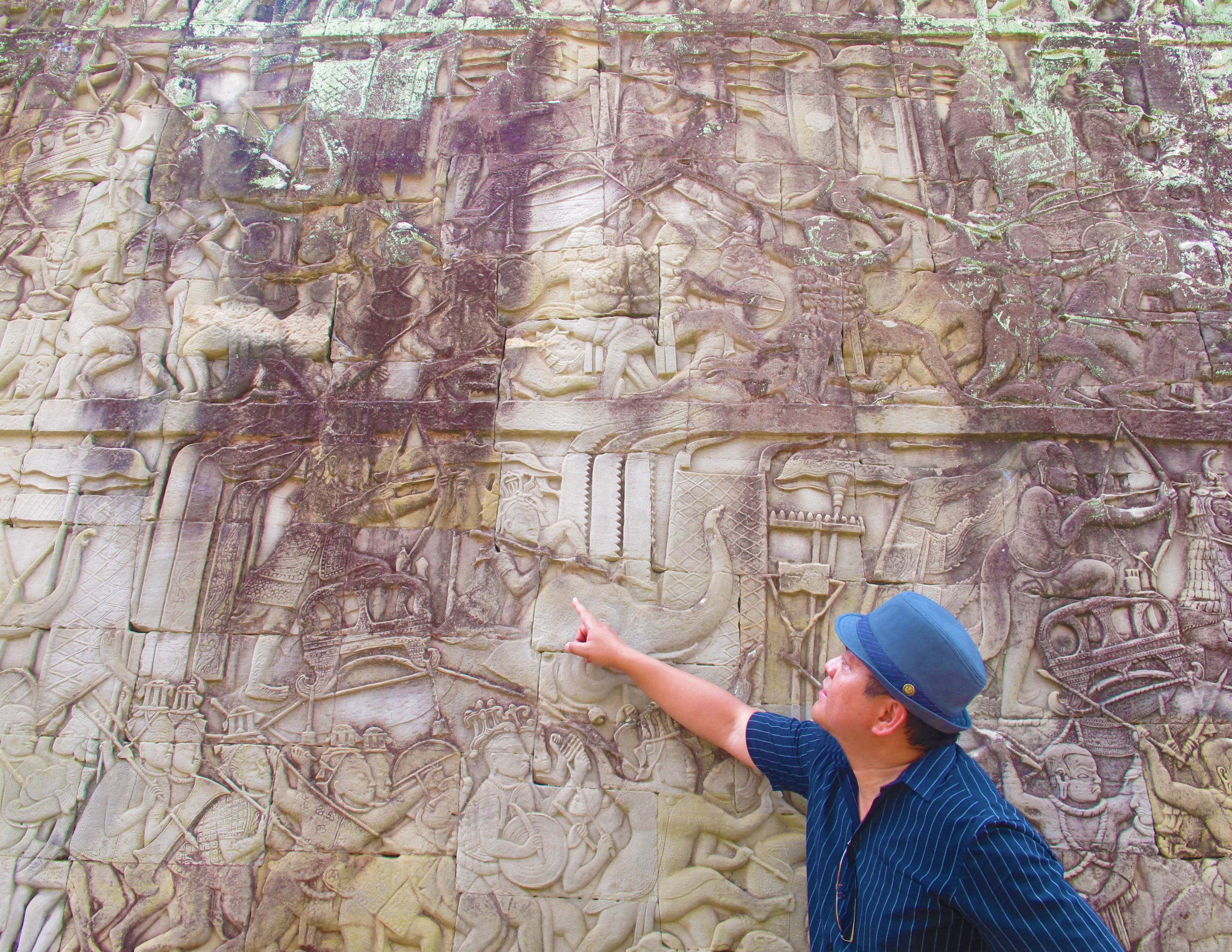
I remembered spending a huge amount of time there, admiring all the narrative carvings plus the superior skills of the craftsmen, sculptors, and artisans who painstakingly devoted their creative energies for the fruition of these incredible marvels. Aren't they exceptionally impressive?

Unveiling Angkor Thom's Temple Ruins continues…
Did you have fun? How was my architectural expedition? Were there temple details that caught your attention and aroused your curiosity?
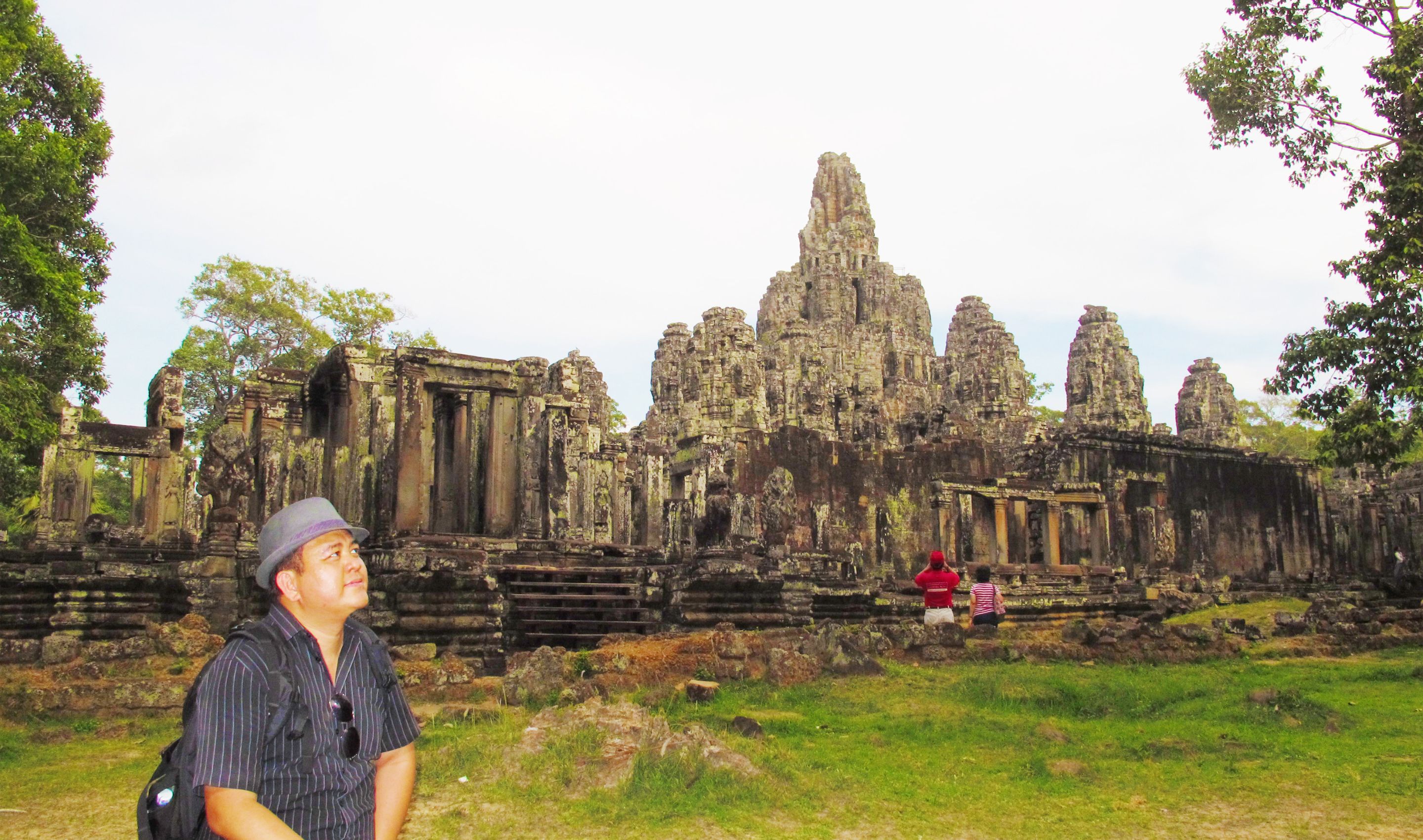
The Bayon Temple is merely the first major landmark for our historic journey inside the royal city of Angkor Thom. Within the vast grounds of this gated complex, there are more iconic ruins with equally fabulous characteristics that we will be covering in future publications of Architecture Moments™. Until then, stay tuned!
If you're interested, you can experience my architectural explorations of Angkor Wat here.
#Hive, let's share our interesting conversations about the Bayon Temple. See you in the comments below.
NOTE:
All published photographs are the intellectual properties of the author:
© 2023 storiesoferne
IT IS IN THE ENJOYMENT OF THE BUILT ENVIRONMENT'S VALUABLE WEALTH OF HUMAN LIFE EXPERIENCES THAT ARCHITECTURE BECOMES TRULY SIGNIFICANT. storiesoferne
Experience Your Built World™
STORIES OF ERNE™
Meet the Author
ERNE is an Architect, Environmentalist, and Adventurer. On the Hive Blockchain, he is the Creator of the Architecture+Design Community. If you are passionate about architecture, the natural environment, and global travel, feel free to connect with him. He will gladly welcome you into his world.
Experience his content portfolios:
STORIES OF ERNE™
Architecture Moments™
Self-Expression Empowers Human Evolution™
© 2020-2023 storiesoferne
All Rights Reserved
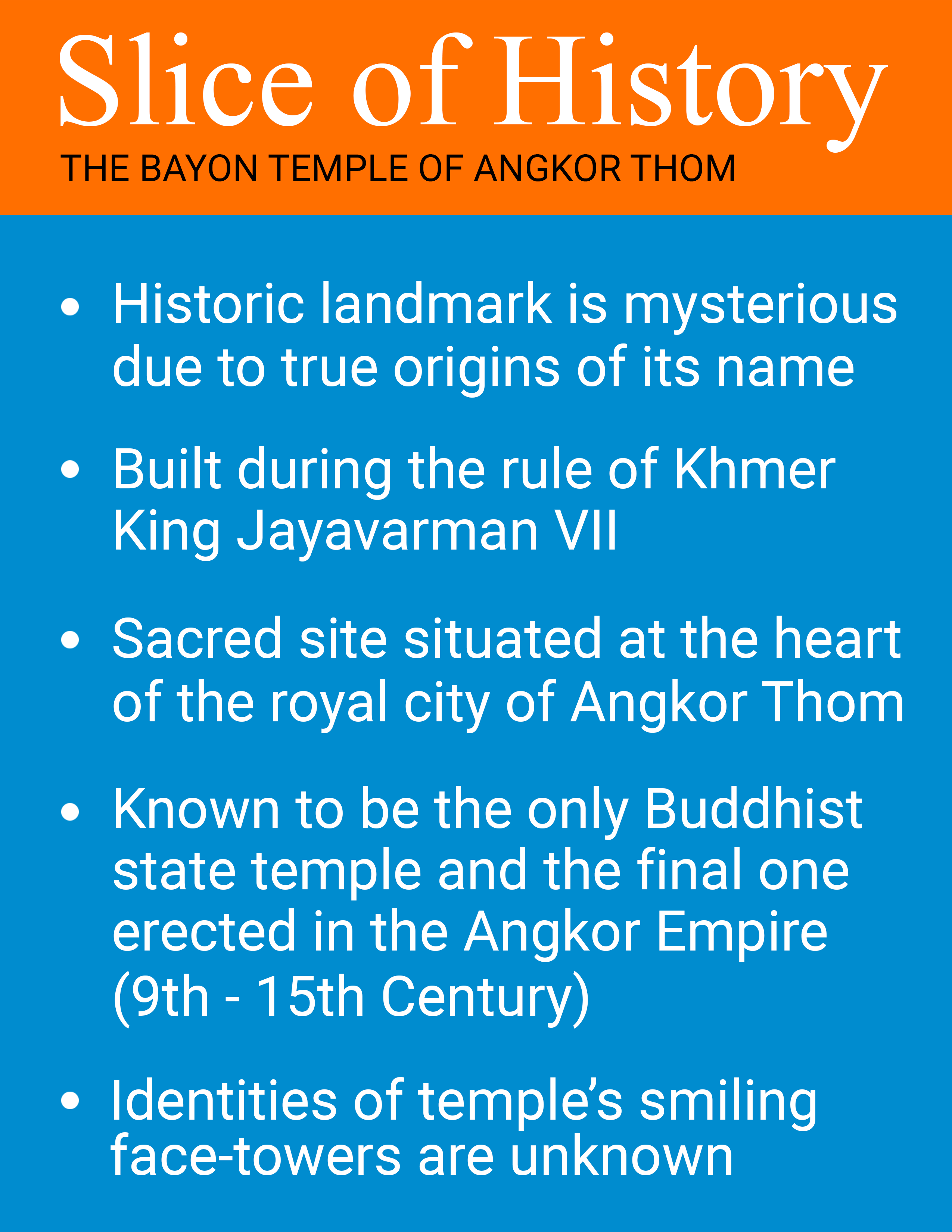



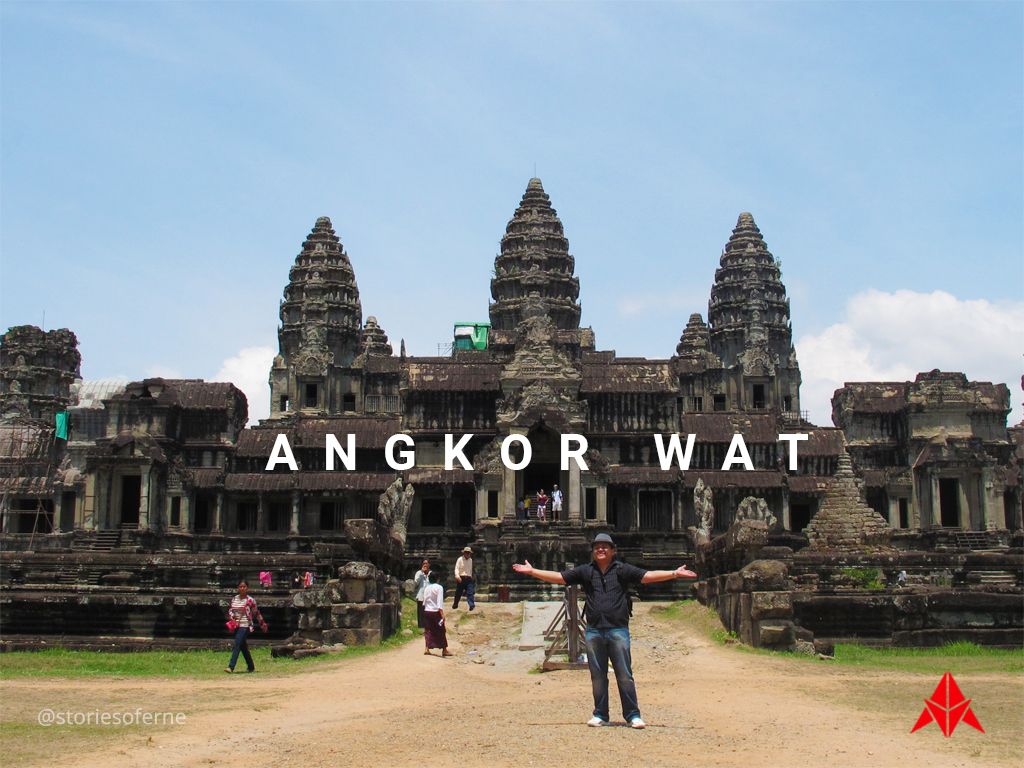
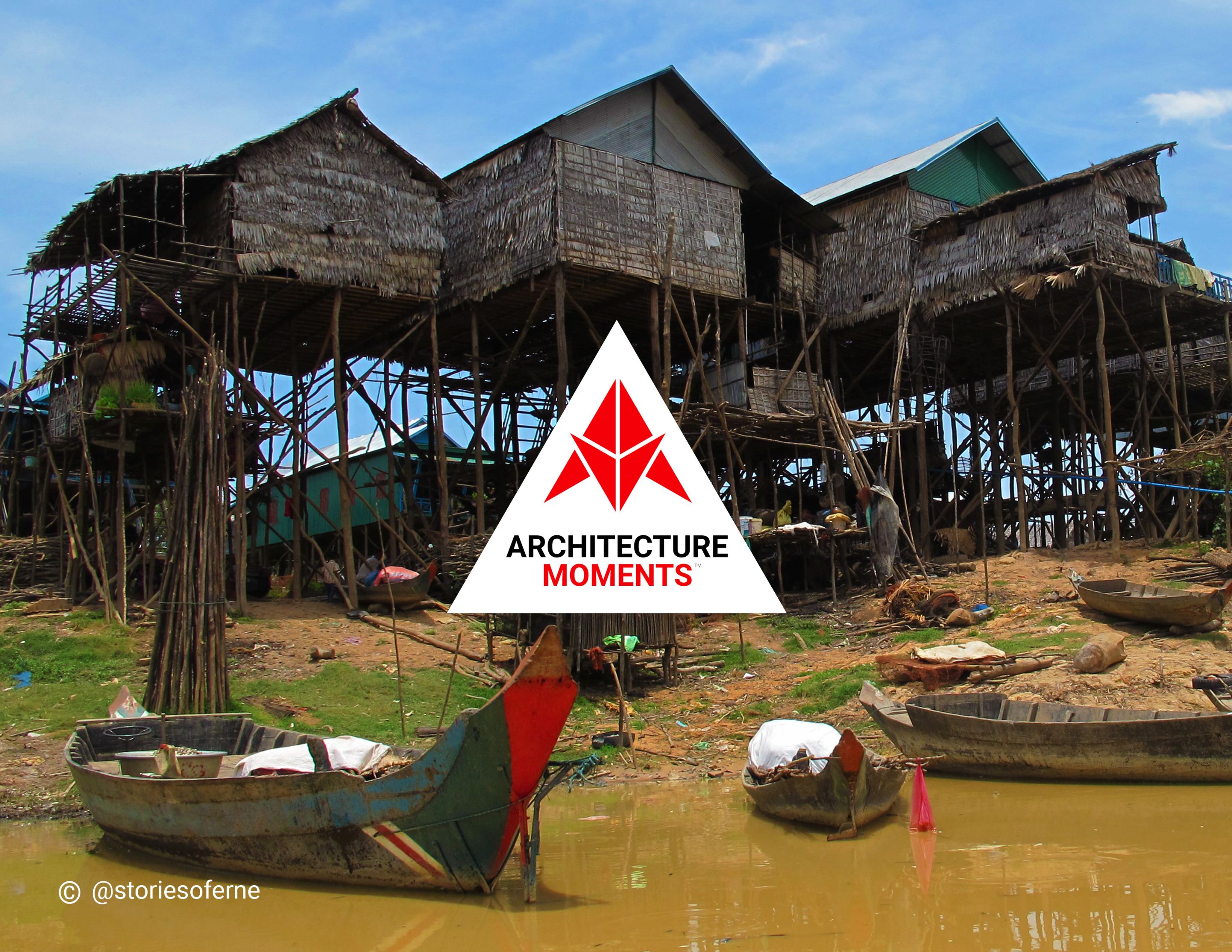

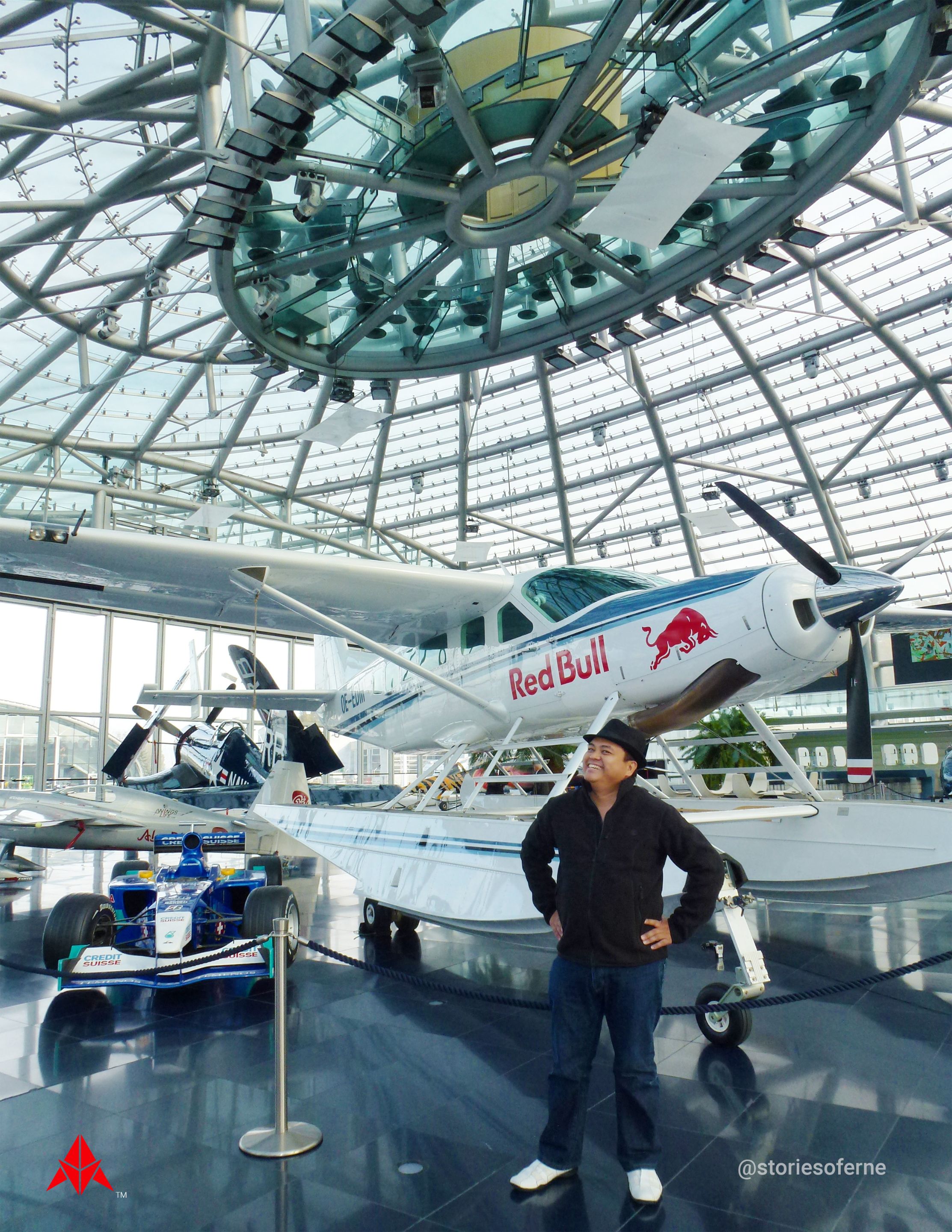

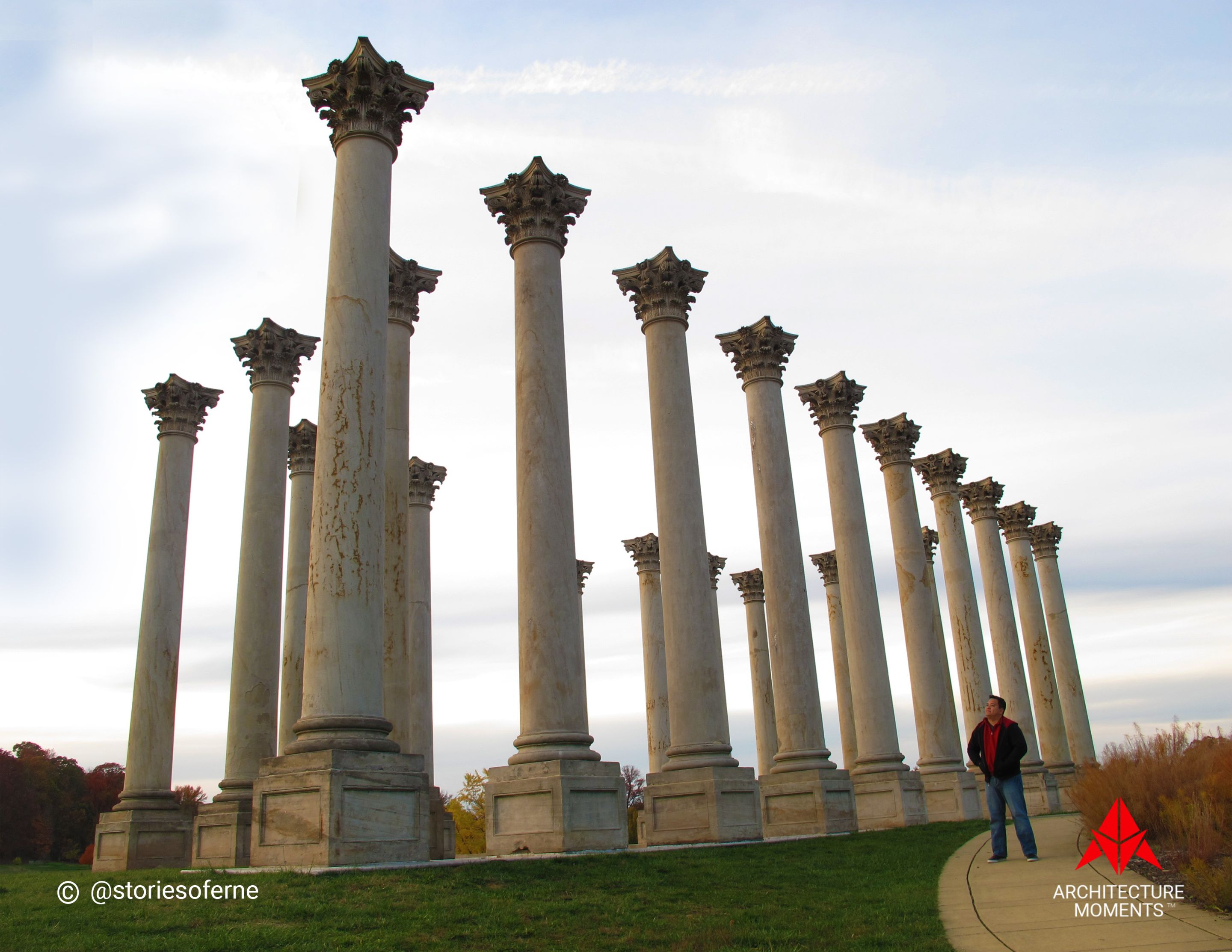
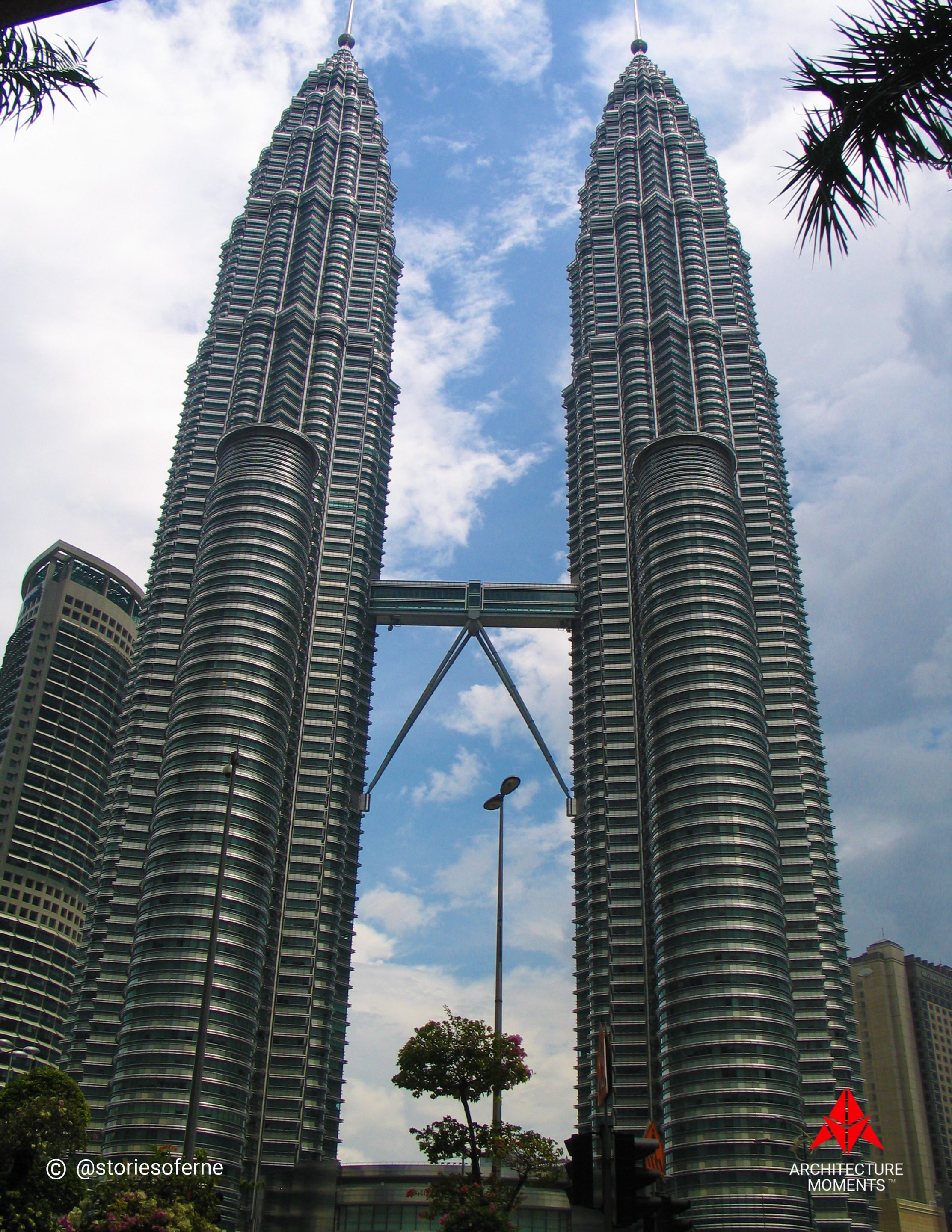

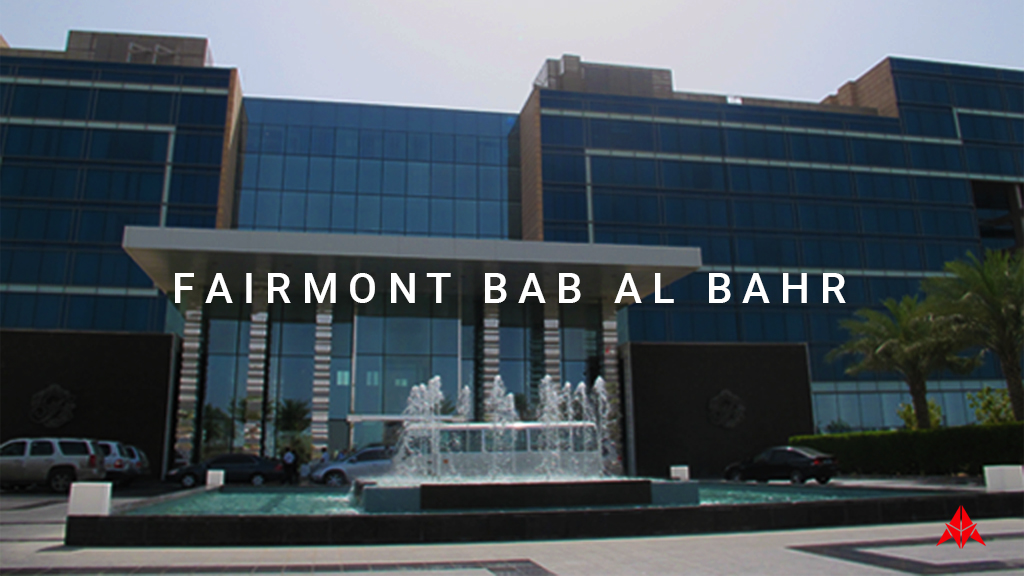
Comments